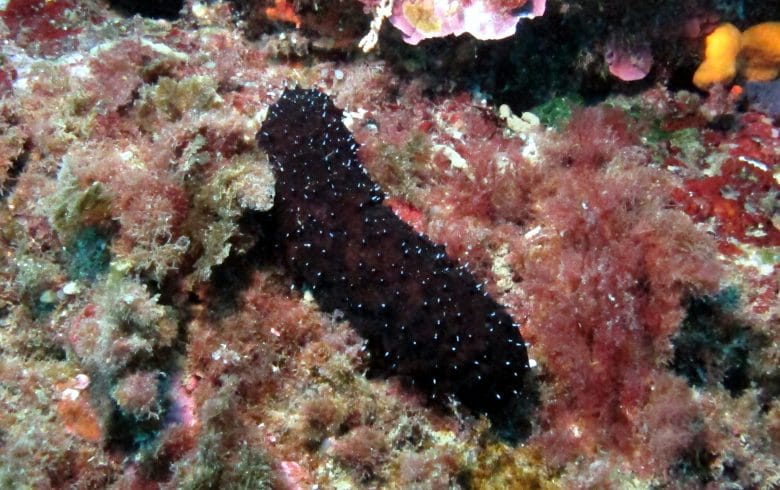
Did you know ?
When it senses danger, it ejects long, sticky threads called Cuvierian tubules to fend off or entangle its foe!
This large sea cucumber (25cm long) is black to deep brown with white or beige spots on the tips of its papillae. It feeds by swallowing sand and absorbing food particles and debris into its digestive system. It has practically no predators apart from the Triton snail. It is found in the Mediterranean and Atlantic on sandy/muddy bottoms or more rarely in Posidonia seagrass beds down to depths of 100m.
Phylum: Echinodermata
Class: Holothuroidea
Order: Aspidochirotida
Family: Holothuriidae
Scientific name: Holothuria forskali
French: Holothurie noire
Spanish: Cohombro de mar negro
Italian: Cetriolo di mare nero
German: Schwarze Seegurke






















